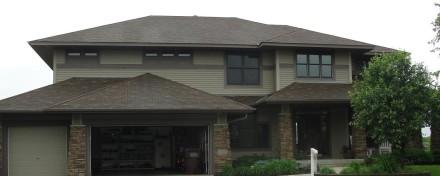I recently had someone email this question:
Is a longer home inspection good news for the seller, or bad news? Or neither?
Great question. The quick answer is that there are so many variables that affect the duration of a home inspection that the time of the inspection alone won't give much meaningful information when it comes to determining the condition of the home. I'll discuss several of these variables to help give a better understanding of what makes a home inspection take longer.
With all of the items listed below, the assumption is that all other things are equal.
The House
Large houses take more time to inspect than small houses.
Old houses take more time to inspect than new houses. Part of the reason is that the house has had time for components to fail, rot, or reach the end of their life expectancy. Used houses typically have many different components that are in different stages of their life expectancy, and it's the home inspectors job to let the client know about components that are at the end of their life expectancy.
Remodeled / renovated houses take longer to inspect. When new systems are mixed in with old systems, the house gets more complex. This frequently means additional HVAC systems, electrical subpanels, etc. All of these additional components considerably add to the time it takes to inspect a house.
Complicated houses take longer to inspect. The more types of roof coverings, siding, windows, floor coverings, etc, the longer the inspection will take. Several small rooms will take significantly more time to inspect than one large room.
Attics and crawl spaces add to the inspection time. Multiple attics and/or crawl spaces considerably adds to the inspection time.
Tall buildings take more time to inspect than short buildings. This is because it's more work to access the roof on a tall building. It's a piece of cake for a home inspector to pull a Little Giant ladder out of their vehicle and hop on the roof. That works great for shorter buildings, or buildings where the upper roof areas can be accessed from the lower roof areas. It's a lot more work to unstrap a 28' extension ladder from the truck and set it up, then carry it back it strap it back on to the truck when done using it.
For example, I recently spent nearly an hour inspecting the roof surfaces at the home pictured below because I used different ladders, and I ended up taking a lot of photos of the roof.

Houses with deferred maintenance (aka - "no maintenance") take a lot longer to inspect. It takes time to document problems, and these problem areas then need to be further inspected to help determine what else might be wrong.
Bank owned and short sale properties usually take much longer to inspect because of deferred maintenance.
The Inspector
One inspector could easily take twice as long as the next inspector to inspect the exact same property. Sometimes, this is a direct reflection of the quality of the inspection.
Inspector F might inspect the crawl space by looking in to the opening, inspect the roof from the ground with binoculars, and say the attic was obstructed with personal items and could not be inspected.
On that same house, inspector A might inspect the crawl space by crawling through it. Before doing so, the inspector might have to set up a tarp outside the crawl space so as not to make a mess when coming out, go out to their vehicle and change in to some coveralls before going in to the crawl space, spend ten minutes inspecting the crawl space, then clean everything back up. This same inspector might not have any problem moving the sellers items to gain access to the attic, and would surely walk the roof to inspect it. Just these three items could easily add an hour on to the inspection time.
Some home inspectors produce their inspection reports on-site, which adds a considerable amount of time to the inspection. At least it should. If a home inspector says that producing a report on-site doesn't add much time to the inspection, they're probably producing a poorly written inspection report filled with generic disclaimers about everything under the sun, and lots of sentences ending with "for its age" (eg - "The 30 year old roof was in normal condition for its age").
Some home inspectors just talk more.
The Client
Clients with a lot of questions make the inspection take longer. Especially the 'why' questions.
Engineers take more time to explain stuff to. They're usually not satisfied until they can successfully explain a problem back to me.
Inspections for first time home buyers take longer than inspections for experienced homeowners. First time home buyers often need to have the basics explained; what a furnace is, how it operates, how to change the furnace filter, etc.
Multiple clients at a single inspection will usually make things take longer. For example, I might inspect the roof and find a problem with the chimney before the buyer shows up. Once Mr. Home Buyer arrives, I'll explain the chimney problem to him. Mrs. Home Buyer arrives an hour later and wants to hear about the chimney, so I take her outside and we discuss the chimney again. Their contractor arrives about halfway through the inspection, so I show him photos of the chimney problem. These all add up.
The bottom line
Don't put too much stock in the amount of time that a home inspection takes. The duration of a home inspection is affected by too many variables for a home seller to draw any conclusions. A long home inspection isn't necessarily bad news.

